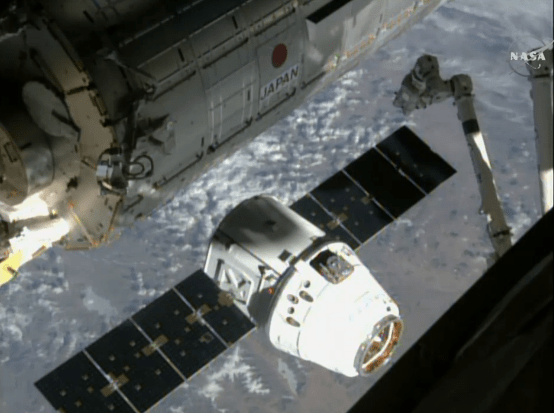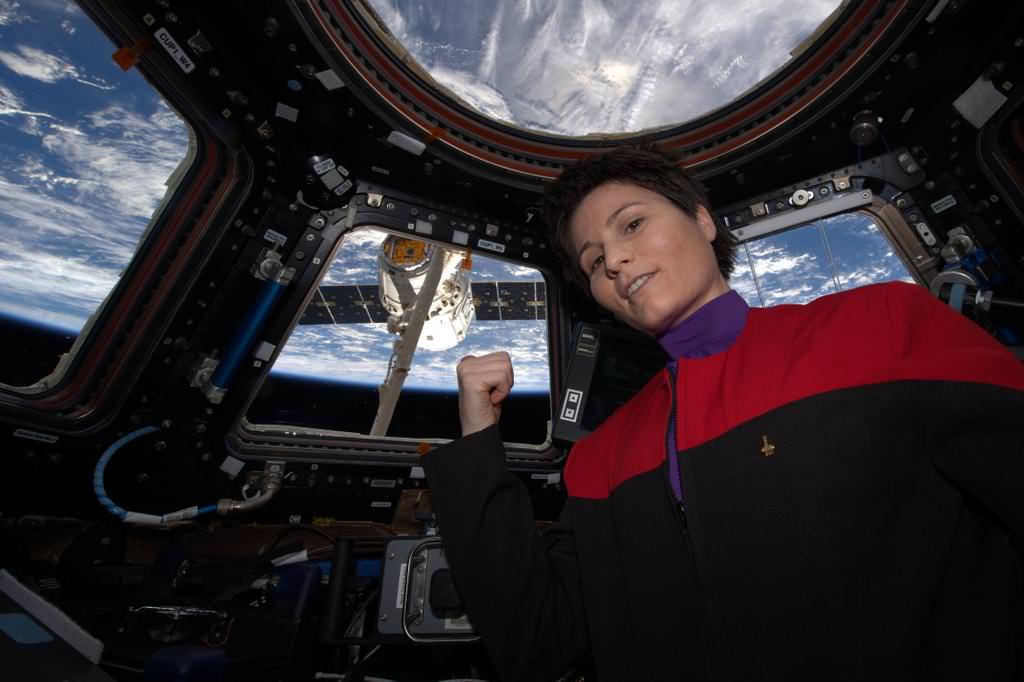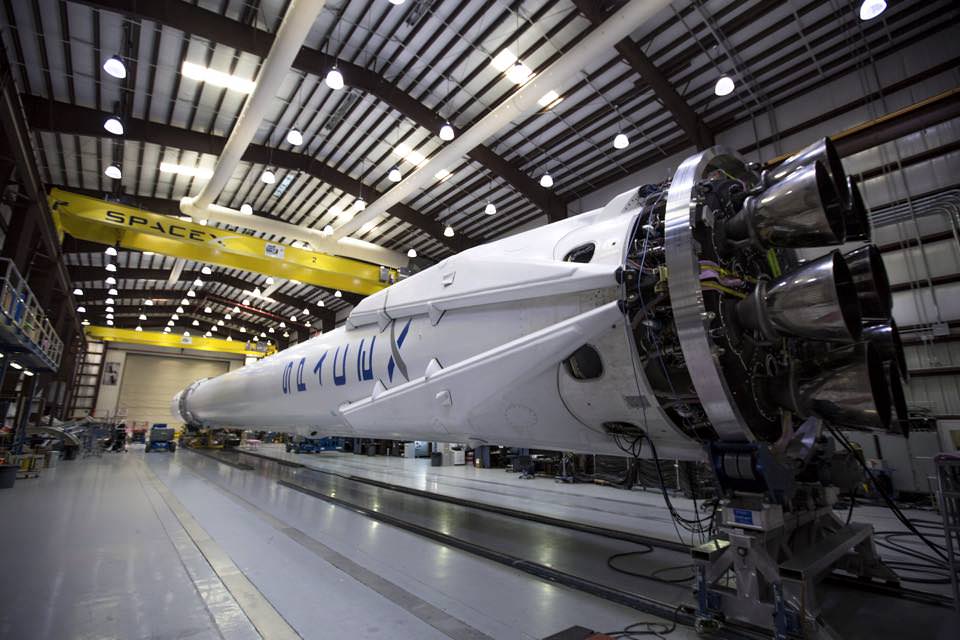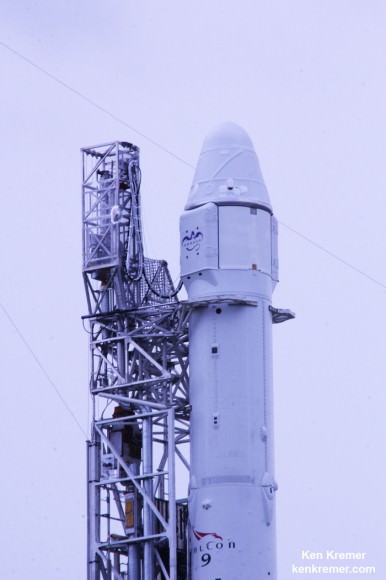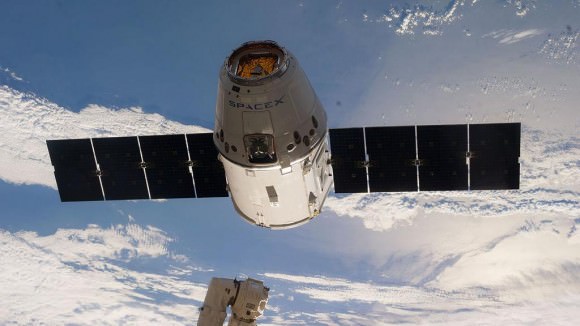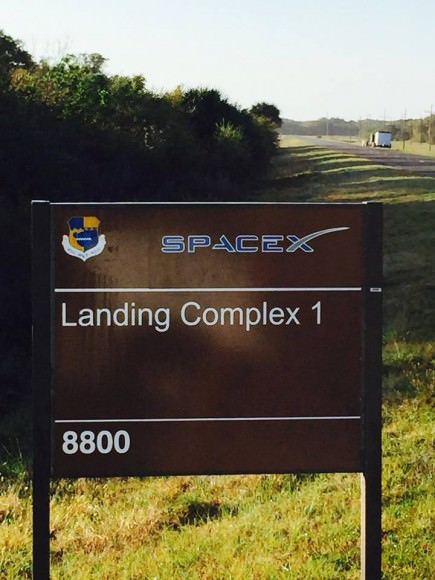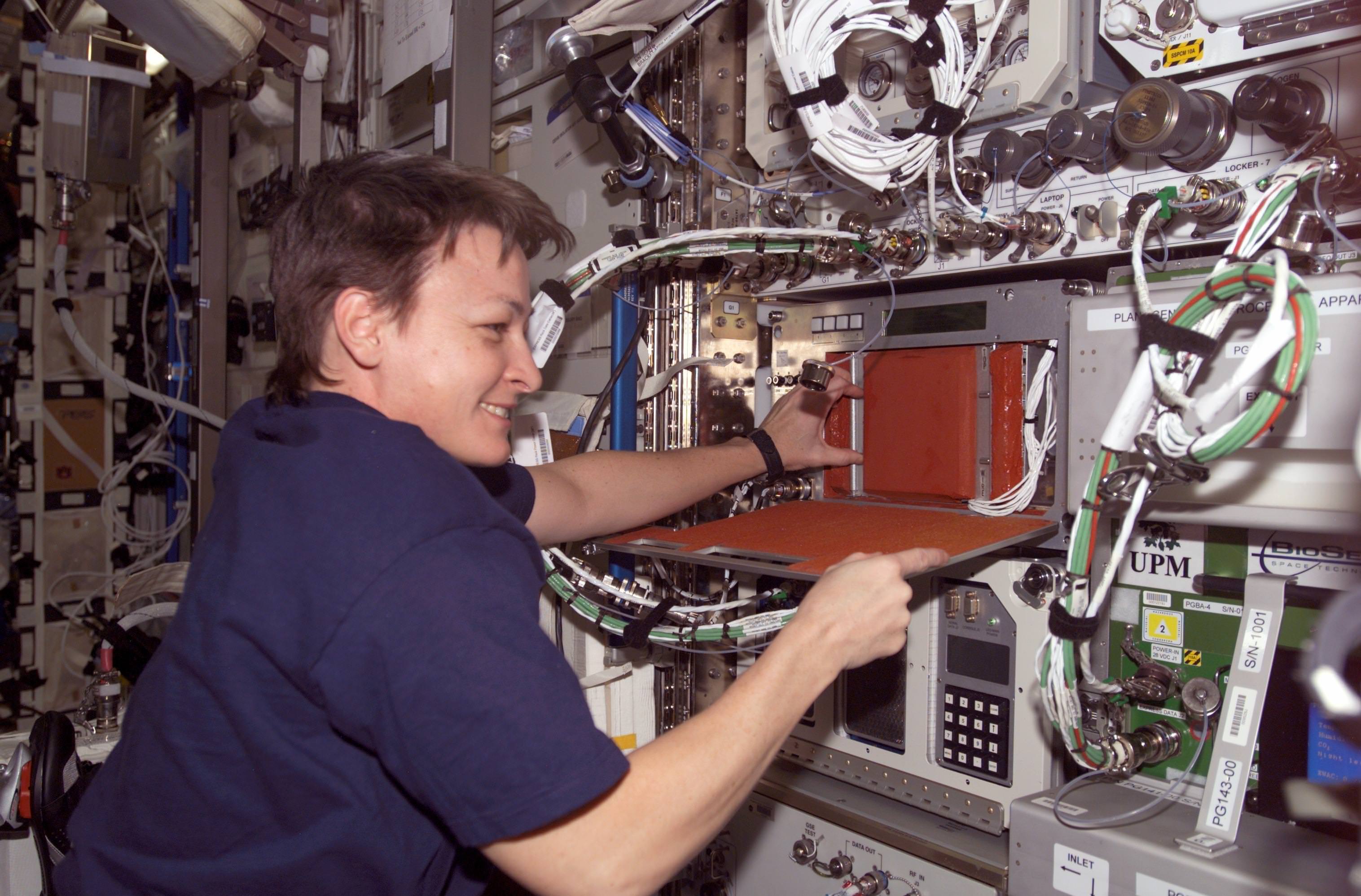KENNEDY SPACE CENTER, FL – Following the flawless blastoff of the SpaceX Falcon 9 booster and Dragon cargo ship on Tuesday, April 14, the resupply vessel arrived at the International Space Station today, April 17, and was successful snared by the outposts resident ‘Star Trek’ crewmate, Expedition 43 Flight Engineer Samantha Cristoforetti of the European Space Agency, donning her futuristic outfit from the famed TV show near and dear to space fans throughout the known galaxy!
Cristoforetti grappled the SpaceX Dragon freighter with the station’s robotic arm at 6:55 a.m. EDT, with the able assistance of fellow crewmate and Expedition 43 Commander Terry Virts of NASA.
Dragon is hauling critical supplies to the six astronauts and cosmonauts serving aboard, that now includes the first ever ‘One-Year Mission’ crew comprising NASA’s Scott Kelly and Russia’s Mikhail Kornienko.
Cristoforetti and Virts were manipulating the 57.7-foot-long (17-meter-long) Canadian-built robotic arm while working inside the stations seven windowed domed Cupola, that reminds many of Darth Vader’s lair in ‘Star Wars’ lore.
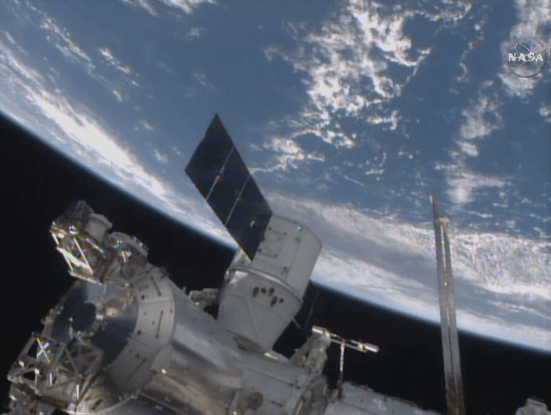
The SpaceX Dragon blasted off atop a Falcon 9 booster from Space Launch Complex 40 at Cape Canaveral Air Force Station in Florida on April 14, 2015 at 4:10 p.m. EDT (2010:41 GMT) on the CRS-6 (Commercial Resupply Services-6) mission bound for the space station.
The Dragon cargo spacecraft was berthed to the Earth facing port of Harmony module of the International Space Station at 9:29 a.m. EDT.
The entire multihour grappling and berthing operations were carried live on NASA TV, for much of the morning and everything went smoothly.
The crew plans to open the hatch between Dragon and the station on Saturday.
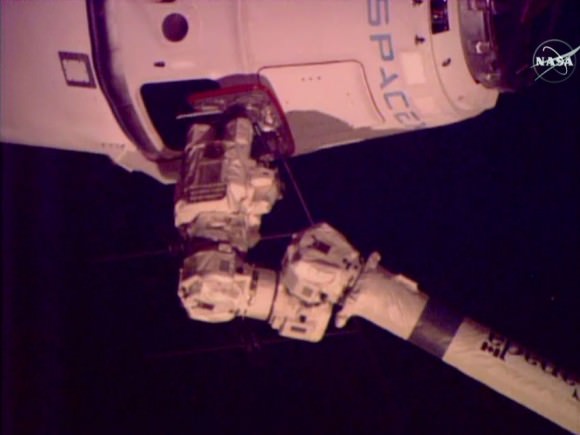
Overall CRS-6 is the sixth SpaceX commercial resupply services mission and the seventh trip by a Dragon spacecraft to the station since 2012.
Dragon is loaded with more than 4,300 pounds of supplies, science experiments, and technology demonstrations, including critical materials to support about 40 of more than 250 science and research investigations during the station’s Expeditions 43 and 44.
Among the research investigations are a fresh batch of 20 rodents for the Rodent Research Habitat, and experiments on osteoporosis to counteract bone deterioration in microgravity, astronaut vision loss, protein crystal growth, and synthetic muscle for prosthetics and robotics.
An Espresso machine is also aboard to enhance station morale during the daily grind some 250 miles above Earth.
Following the April 14 launch, SpaceX made a nearly successful soft landing of the first stage on an ocean floating platform in the Atlantic Ocean. Read my story – here.
Read Ken’s earlier onsite coverage of the CRS-6 launch from the Kennedy Space Center and Cape Canaveral Air Force Station.
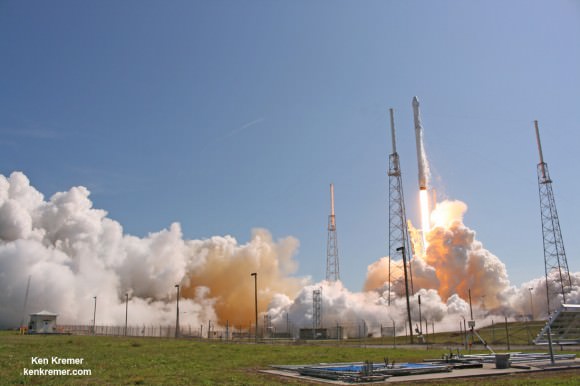
Stay tuned here for Ken’s continuing Earth and planetary science and human spaceflight news.
………….
Learn more about SpaceX, Mars rovers, Orion, Antares, MMS, NASA missions and more at Ken’s upcoming outreach events:
Apr 18/19: “Curiosity explores Mars” and “NASA Human Spaceflight programs” – NEAF (NorthEast Astronomy Forum), 9 AM to 5 PM, Suffern, NY, Rockland Community College and Rockland Astronomy Club
